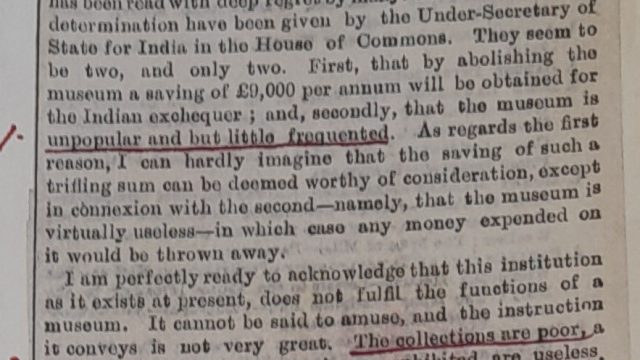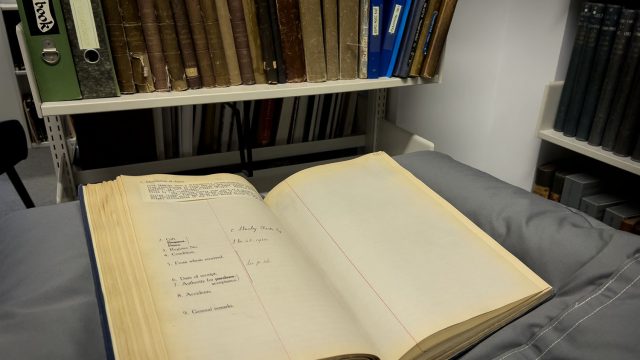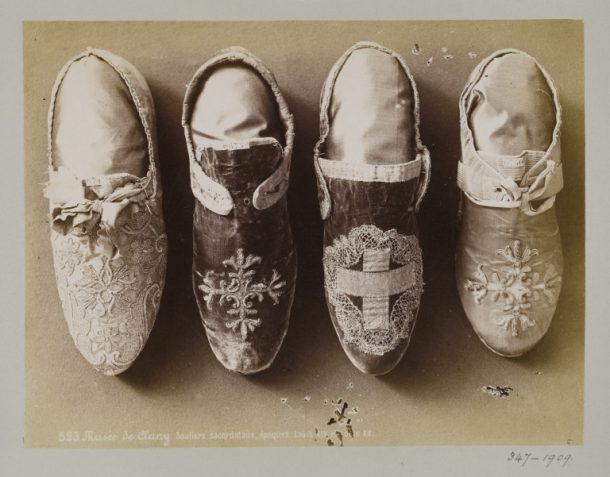
To mark the opening of our wonderful ‘Shoes: Pleasure and Pain’ exhibition, I’d like to share with you these photographs, which came to light as part of my ongoing research into the historic reference photographs we have here at the V&A.
These images show shoes in the collection of the Musée de Cluny in Paris. The photographs were taken by the French photographer Paul Robert, and some bear his blind stamp. We don’t have an exact date for the when the images were taken, but Paul Robert died in 1898, so we know these must have been taken before then.
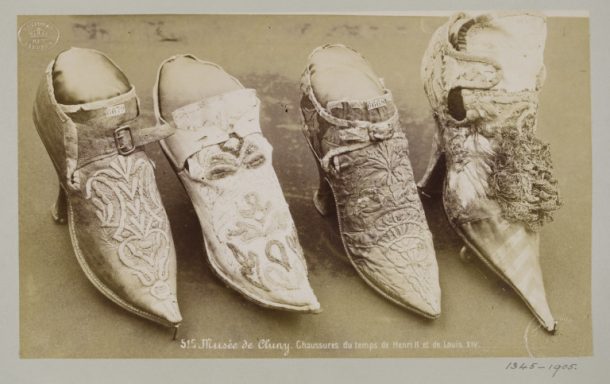
The shoes displayed in the photographs date from the 16th to the 18th century, and I was surprised to see such impractical and uncomfortable-looking shoes from such an early date – these were clearly high-status fashionable items worn for special occasions, which must have been expensive to purchase.
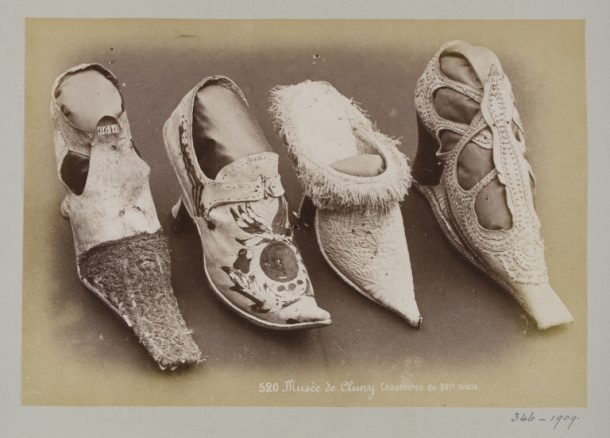
The shoes in the three photographs above are identified as ecclesiastical shoes, so were presumably for men to wear, though to a modern eye they look ‘feminine’, given the embroidery and lace, the pointed toes and high heels.
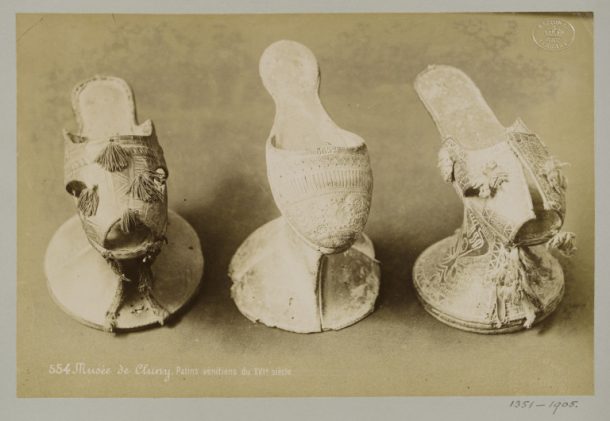
The shoes in this photograph are intended to be worn by women, and are called ‘chopines’, The high platform heel served to keep ladies’ skirts out of street dirt. Walking in them must have taken practice, especially as they have no backs to keep them on the foot. One would have worn indoor shoes inside them so they could be taken off when one stepped inside.
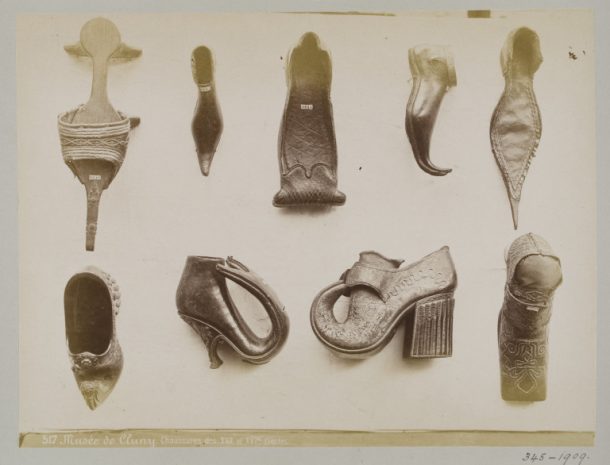
The shoes in this image are even more unusual and uncomfortable-looking to the modern eye – some of them look as though they must have affected the gait as much as Alexander McQueen’s ‘Armadillo’ shoes – if you’ve seen the ‘Savage Beauty’ exhibition you might remember how strangely the models wearing those shoes walked!
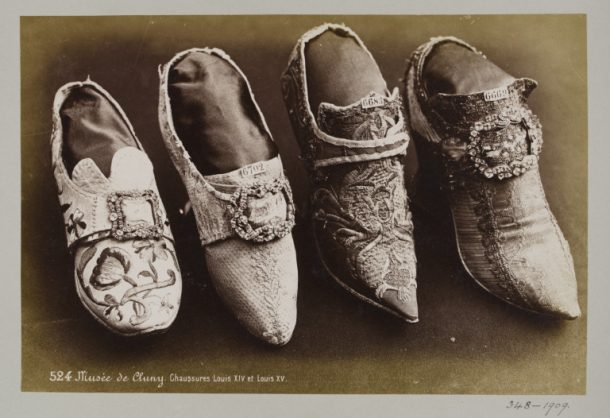
There’s a perception that human feet have grown bigger on average over the centuries, though the extent to which this is true is disputed, as social factors complicate the issue – from female emancipation to trends in fashion. The shoes in the photograph above are ecclesiastical and therefore presumably for men, though they look so very small and dainty.
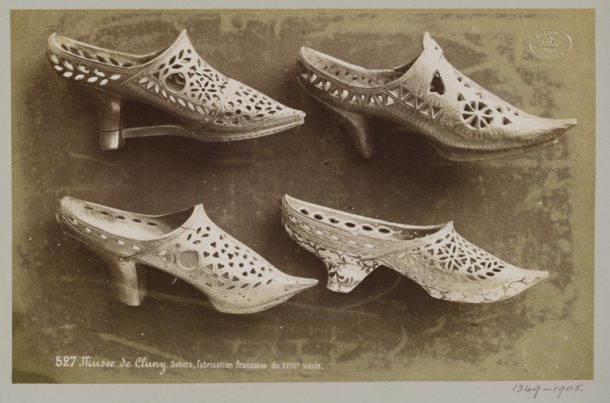
This last set are French sabots (overshoes) dating from the 18th century, so like the chopines, one would have worn ‘indoor’ shoes inside these, and only worn them outside. Even as overshoes for wearing in the mud, these are very pretty and ornate.
If you’d like to find out more about shoes, do check out these blog posts from the ‘Shoes: Pleasure and Pain’ team here, and if you’d like to come and see these photographs, please make an appointment at the Prints and Drawings Study Room.
